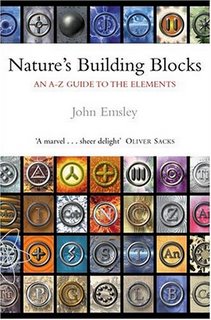Things you never knew about iron

Apparently, although spinach contains a lot of iron, this is not in a form that can be assimilated by the human body. Lettuce has more. The supposed iron-rich qualities of spinach which enabled Popeye to overcome Bluto's dastardly plans and save the day, are due to a printing error in a US Government publication about the nutrient value of foods. A woman needs 4 mg of iron more per day than a man (11 mg compared to 7). Iron-rich foods are liver, corned beef, iron-fortified breakfast cereals, red wine, baked beans, peanut butter, raisins, bread, eggs, curry powder and molasses. Normal brain function requires iron, and iron is bound in the body in a protein molecule called transferrin. Iron is also an essential nutrient in the oceans: where it is rich, plankton grow and thrive, and can thus support more complicated life-forms, such as fish.
There's more, but I won't transcribe in more detail, as all this fascinating information is from a fantastic book I picked up yesterday called "Nature's Building Blocks - An A - Z guide to the elements" by John Emsley. Everything you ever wanted to know about silicon, iodine, lithium and the rest, in terms of their environmental, cosmic, medical and other uses and history is here, and hosts of other facts that even chemists might not have previously been aware of. The book is decidedly written for a non-technical readership, and is very easy to use. Highly recommended.
Update: I wrote this post from home on my Mac, and couldn't get any font changes or links, for some reason. So here they are now for you to look at.

2 Comments:
Jolly good (says he, chewing his breakfast liver-and-peanut butter sandwich).
I can foresee some other element specials as I dip into the book from time to time.
Thanks for the breakfast suggestion, though...
Post a Comment
<< Home